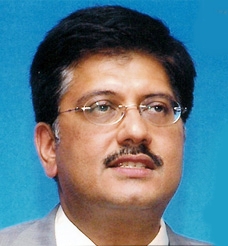Railways looks to triple share in freight traffic to 3 bn tonnes by 2030
03 Jan 2018
Indian Railways will award projects to foreign bidders only on a reciprocal basis while also aiming to triple gross freight traffic to 3 billion tonnes by 2030, railway minister Piyush Goyal has said.
 The Railways will come out with a "reciprocation" strategy on bidding for major projects, the minister said on Tuesday.
The Railways will come out with a "reciprocation" strategy on bidding for major projects, the minister said on Tuesday.
Under the strategy, companies from only those countries which allow Indian firms to bid for their development projects would be allowed to participate in similar projects in India, Goyal said.
"As we are taking steps to become a $10 trillion economy, we want to increase the share of railways freight traffic to 3 billion tonne from the current 1.1 billion tonne," the minister told reporters.
The plan is to increase the Railways' share in overall goods movement to 50 per cent from the current 35 per cent. Goyal said.
Railways has completed a record 476-km track renewal in December and expects the figure to touch 3,500-km in 2017-18.
On passenger services, the minister said the Railways is undertaking a standardisation and all trains will soon have 22 coaches, to be able to run on any routes.
The changes in the number of trains operating on a route and their timings will reflect in the new time-table, to be published in July.
"All trains will have 22 coaches, the length of the platforms will be increased and other related changes will be carried out. The engineering department is looking into it," Goyal said.
Currently, coaches are of two kinds - ICF and LHB - and the number of coaches in a train could be 12, 16, 18, 22 or 26, depending on its demand, making it difficult for the railways to substitute one with the other, particularly in case of a delay.
"If the number of coaches is the same in every train, we can press any train - which is ready, has arrived at the station and undergone maintenance - into operation, instead of waiting for the same train to get ready," a senior railway official explained.
He added that the railways had identified over 300 groups of trains and their routes in the first phase. The changes in the number of trains operating on a route and their timings will reflect in the new time-table, to be published in July.
"The advantage of having standard trains - all of the same composition - for example, the same number of general, sleeper and air-conditioned coaches, is that they can run on any route.
"In the first phase, we have segregated over 300 groups of trains and identified routes on which they can be run -- mostly mainline, busy routes," the official said.







.webp)














